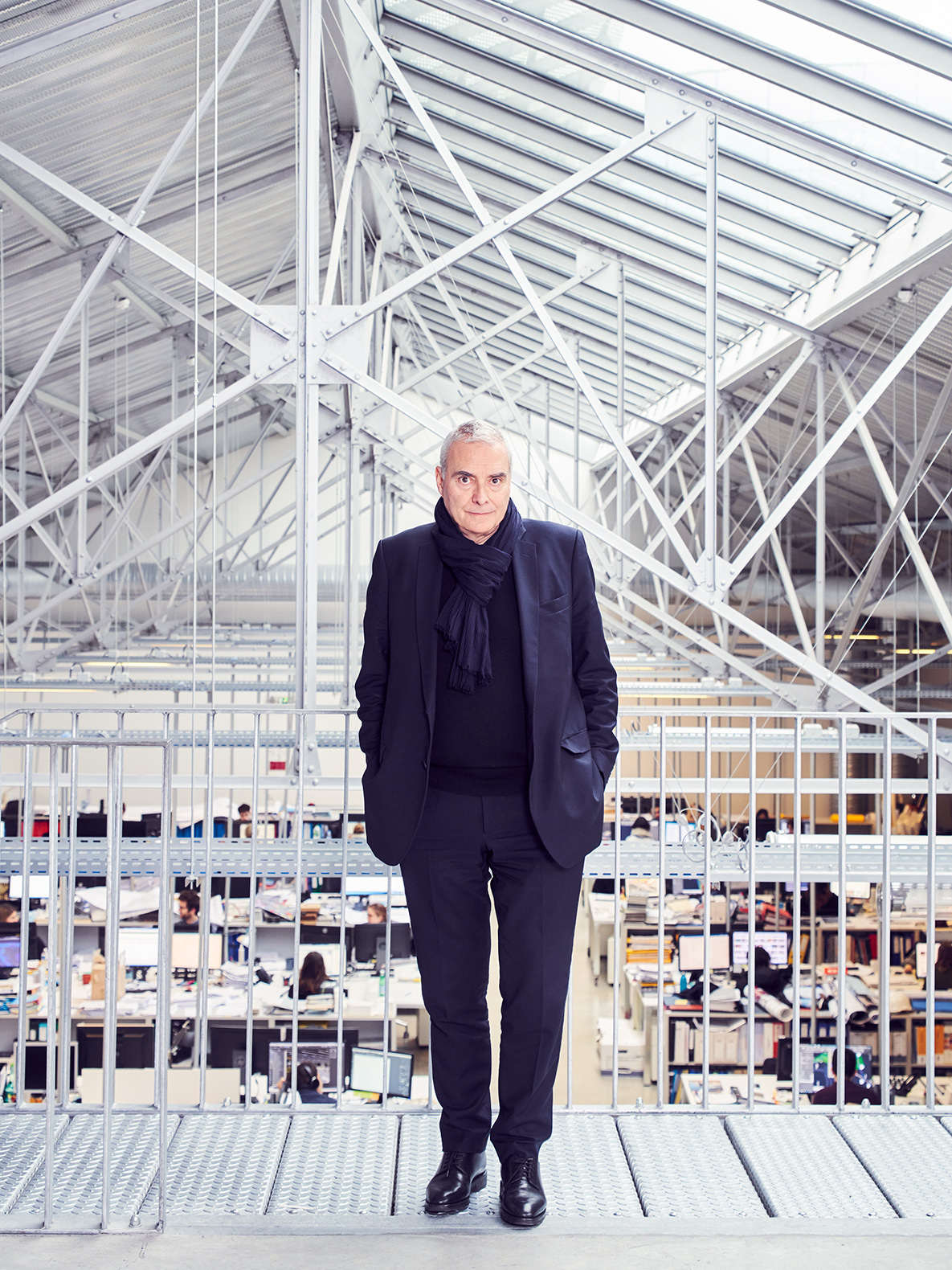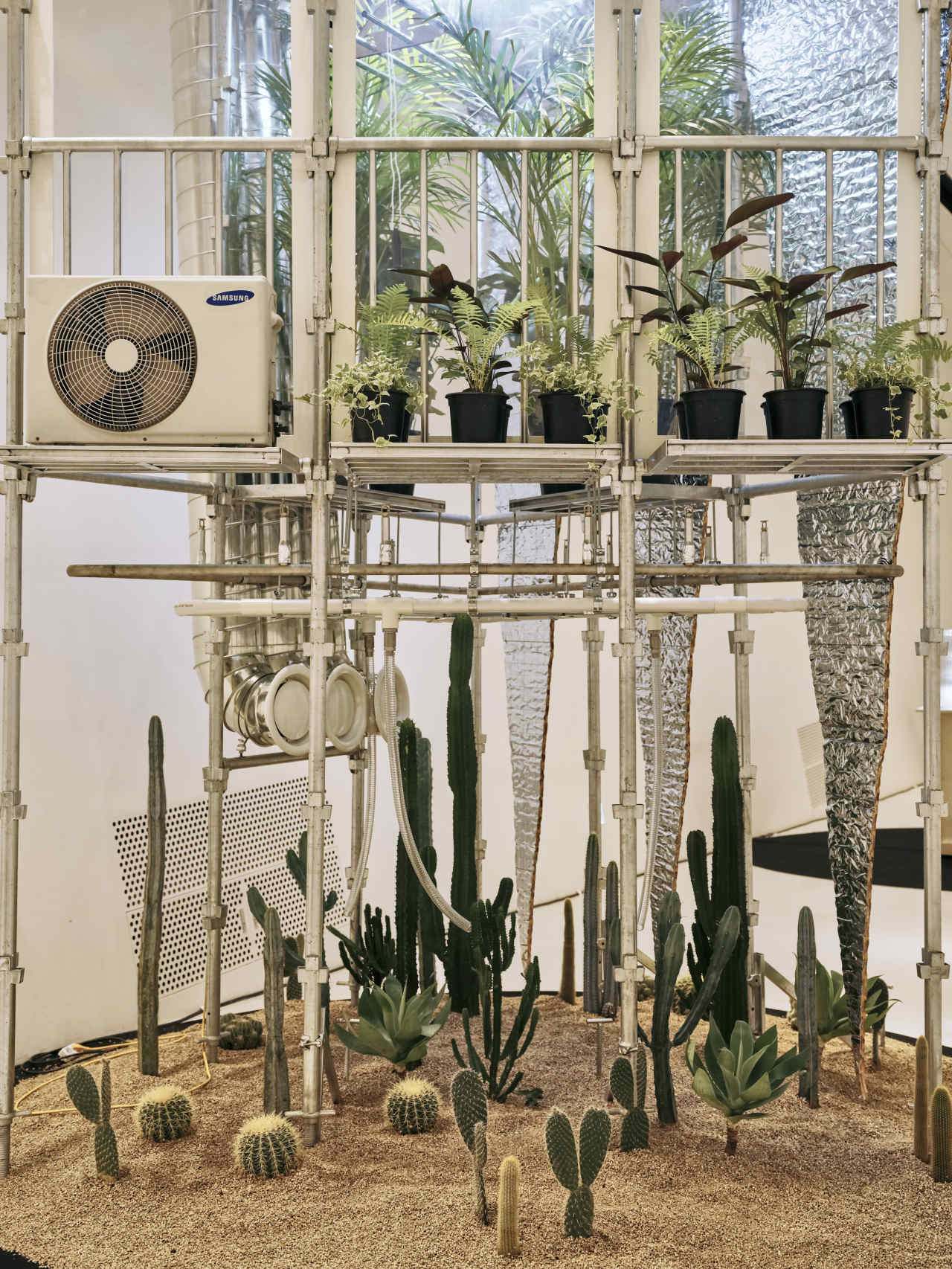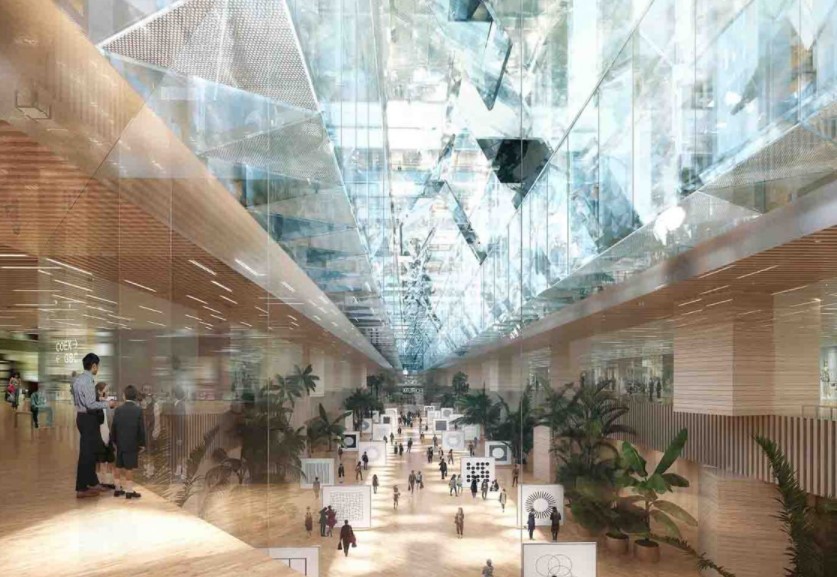[Herald Interview] Dominique Perrault calls on architects to be conductors
French architect looks underground to counter indiscriminate expansion of urban landscape
By Park YunaPublished : Nov. 3, 2021 - 00:19

French architect Donique Perrault has been advocating for more important roles for architects over the past several years.
As the general director of the Seoul Biennale of Architecture and Urbanism 2021, he brought together 190 architects and artists from across the world under the theme of the “Crossroads, Building the Resilient City.”
“In my opinion, many people consider architects less important today, while they demand engineers, landscape experts and environmentalists. It seems they no longer expect a comprehensive perspective and sensibility from architects. Architects should become advocates for architecture and fight for their role,” Perrault said, speaking in French, during an interview with The Korea Herald on Oct. 28 at Dongdaemun Design Plaza.
“The role of architects is to aggregate all of the information -- including the landscape, natural environment, technology -- to create architecture. Although they are neither engineering experts nor environmentalists, they are the ones who encompass all the values to build architecture for the public interest,” he said.
The 68-year-old architect divided the theme of the recently-finished biennale into five subtitles -- “Above/Below,” “Heritage/Modern,” “Craft/Digital,” “Natural/Artificial” and “Safe/Risk” -- showing integral aspects that architects consider in designing architecture and urban design.
Perrault became widely known in South Korea for the Ewha Campus Complex at Ewha Womans University in Seoul, which was completed in 2008. His ties with Seoul began nearly 20 years ago when he started frequently traveling to the city for the project. The major change that he sees in the city -- compared to two decades ago -- is people’s attitude about city development.

“I feel people have become more conscious about coexisting with things from the past rather than simply pursuing fancy new buildings in the city. They think more about how tradition and contemporary architecture go together,” he said. “I also see many roof gardens on buildings that I rarely saw about 10 years ago,” he said.
He is currently working on another major project with the city named “Light Walk” at the Gangnam Intermodal Transit Center in front of Coex in southern Seoul. The aim is to create a more pedestrian friendly landmark for all underground infrastructure where the users can experience natural light and air deep underground.
When asked about his idea of using underground space, seen at both the ECC and Light Walk, he said he approaches it with a forward-looking perspective about the urban landscape, urging a creative imagination for the fast-changing lifestyle as well as environmentally-friendly aspects.

In the city where high-rise apartments are dominant, Perrault has turned his eye to the underground space, which, according to the architect, will become a more crucial space when designing urban space in the future, especially when underground parking lots become less necessary with future automobile models. The underground spaces have great potential to function as warehouses or city farms to grow vegetables, rather then a place to bury waste material.
“The city may seem to develop vertically with high-rise buildings, but it also constantly expands its sphere like oil spilled in the sea, encroaching on the surrounding natural environment. We need to stop this kind of movement, and in order to do so, we need to utilize underground spaces,” he said.
The “Light Walk” project is in its early construction phase and is expected to be completed in 2026, he added.
The landscape of the metropolis that we see today was designed at least 5 or 10 years ago, and more changes will be made in the coming years, accelerated by the pandemic, including apartments in Seoul, he said.
“Going through the pandemic, it seems the proximity and heterogeneity of spaces have become important. In order to keep up with the changing demand, new types of investment and a variety of projects are called for,” he said.
By Park Yuna (yunapark@heraldcorp.com)








![[Kim Seong-kon] Democracy and the future of South Korea](http://res.heraldm.com/phpwas/restmb_idxmake.php?idx=644&simg=/content/image/2024/04/16/20240416050802_0.jpg&u=)








![[KH Explains] Hyundai's full hybrid edge to pay off amid slow transition to pure EVs](http://res.heraldm.com/phpwas/restmb_idxmake.php?idx=652&simg=/content/image/2024/04/18/20240418050645_0.jpg&u=20240418181020)

![[Today’s K-pop] Zico drops snippet of collaboration with Jennie](http://res.heraldm.com/phpwas/restmb_idxmake.php?idx=642&simg=/content/image/2024/04/18/20240418050702_0.jpg&u=)